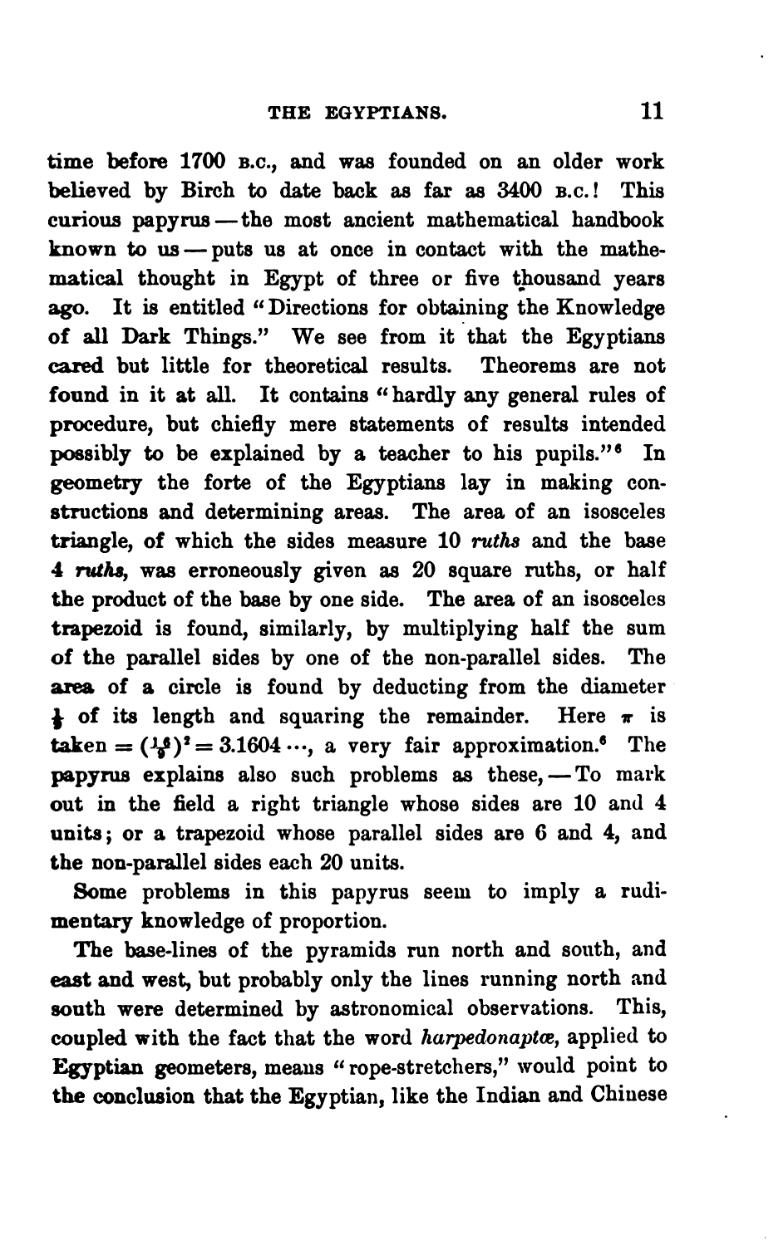time before 1700 B.C., and was founded on an older work believed by Birch to date back as far as 3400 B.C.! This curious papyrus—the most ancient mathematical handbook known to us—puts us at once in contact with the mathematical thought in Egypt of three or five thousand years ago. It is entitled "Directions for obtaining the Knowledge of all Dark Things." We see from it that the Egyptians cared but little for theoretical results. Theorems are not found in it at all. It contains "hardly any general rules of procedure, but chiefly mere statements of results intended possibly to be explained by a teacher to his pupils."[6] In geometry the forte of the Egyptians lay in making constructions and determining areas. The area of an isosceles triangle, of which the sides measure 10 ruths and the base 4 ruths, was erroneously given as 20 square ruths, or half the product of the base by one side. The area of an isosceles trapezoid is found, similarly, by multiplying half the sum of the parallel sides by one of the non-parallel sides. The area of a circle is found by deducting from the diameter of its length and squaring the remainder. Here is taken , a very fair approximation.[6] The papyrus explains also such problems as these,—To mark out in the field a right triangle whose sides are 10 and 4 units; or a trapezoid whose parallel sides are 6 and 4, and the non-parallel sides each 20 units.
Some problems in this papyrus seem to imply a rudimentary knowledge of proportion.
The base-lines of the pyramids run north and south, and east and west, but probably only the lines running north and south were determined by astronomical observations. This, coupled with the fact that the word harpedonaptæ, applied to Egyptian geometers, means "rope-stretchers," would point to the conclusion that the Egyptian, like the Indian and Chinese



